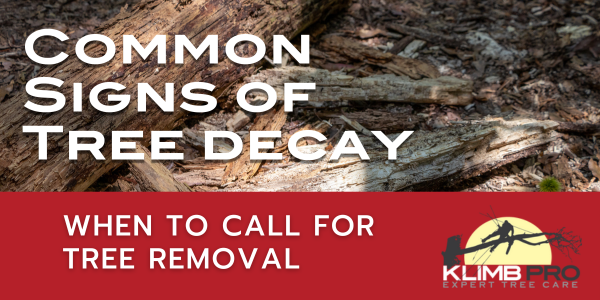
Trees are not only essential for the environment, but they also provide us with shade and oxygen and enhance the beauty of our property. However, it’s important to remember that trees, like any living organism, are prone to decay and disease. As we enter hurricane season, it becomes even more crucial to ensure that any decaying trees are promptly removed. In this article, we will explore the common signs of tree decay and highlight the importance of calling for professional removal services. By recognizing these signs early on and taking action, you can effectively reduce potential hazards, safeguard your property, and protect the well-being of your loved ones.
Dead or Falling Branches
One of the first signs of decay in a tree is the presence of dead or falling branches. If you notice an abundance of dead branches scattered around the tree or see branches falling off frequently, it’s an indicator of declining health. Decaying branches are weak and can pose a significant risk to property, vehicles, or even people beneath them. Contacting a professional tree removal service, such as KlimpPro, will help assess the tree’s condition and determine if removal is necessary.
Fungal Growth
The presence of mushrooms or other fungal growth around the base or on the trunk of a tree is a clear indication of decay. Fungi feed on decaying organic matter, including the tissues of trees. They can compromise the structural integrity of the tree, making it prone to collapse during severe weather conditions. If you spot any fungal growth, it is vital to call for removal services promptly. A trained arborist can evaluate the extent of decay and recommend appropriate action.
Bark Damage and Peeling
Healthy trees have intact bark that serves as a protective layer against pests, diseases, and environmental stressors. However, when you observe significant bark damage, such as cracks, splits, or peeling, it suggests underlying issues. Bark damage can be caused by insect infestation, disease, or physical injury. These openings provide entry points for pathogens, accelerating the decay process. Engaging a professional tree removal service will help identify the cause and if there is a need for concern.
Leaf Abnormalities and Leaf Loss
A decline in a tree’s overall health is often accompanied by noticeable leaf abnormalities. These may include discoloration, stunted growth, and premature leaf drop. While some leaf loss is natural during specific seasons, excessive and premature leaf shedding is a warning sign. Diseased and decaying trees struggle to support their foliage, resulting in leaf wilting or discoloration. If you observe a substantial loss of leaves or abnormal leaf patterns, it is advisable to consult a tree removal specialist for a thorough evaluation.
Trunk Decay and Hollows
As trees age, it is common for the trunk to develop hollows or show signs of decay. Hollow areas weaken the tree’s structure and compromise its stability. External signs of trunk decay include cavities, cracks, or peeling bark, indicating internal decay processes. If you suspect trunk decay, seeking professional advice is crucial. Tree removal experts can assess the extent of decay and determine if the tree poses a safety hazard. Prompt action can prevent the tree from falling unexpectedly.
Being aware of the common signs of tree decay is essential for ensuring the safety of your property and loved ones. If you notice any of these signs in your trees, it is crucial to contact a professional tree removal service promptly. At KlimpPro, our team of skilled arborists is equipped to evaluate the health of your trees and recommend appropriate action, whether it’s tree removal or other necessary treatments. Don’t wait until it’s too late—prioritize the well-being of your trees and the safety of your surroundings by staying vigilant and seeking professional assistance when needed.

